#ROME : "The Other Rome" by Peter Brown (NYRB) Février 2022
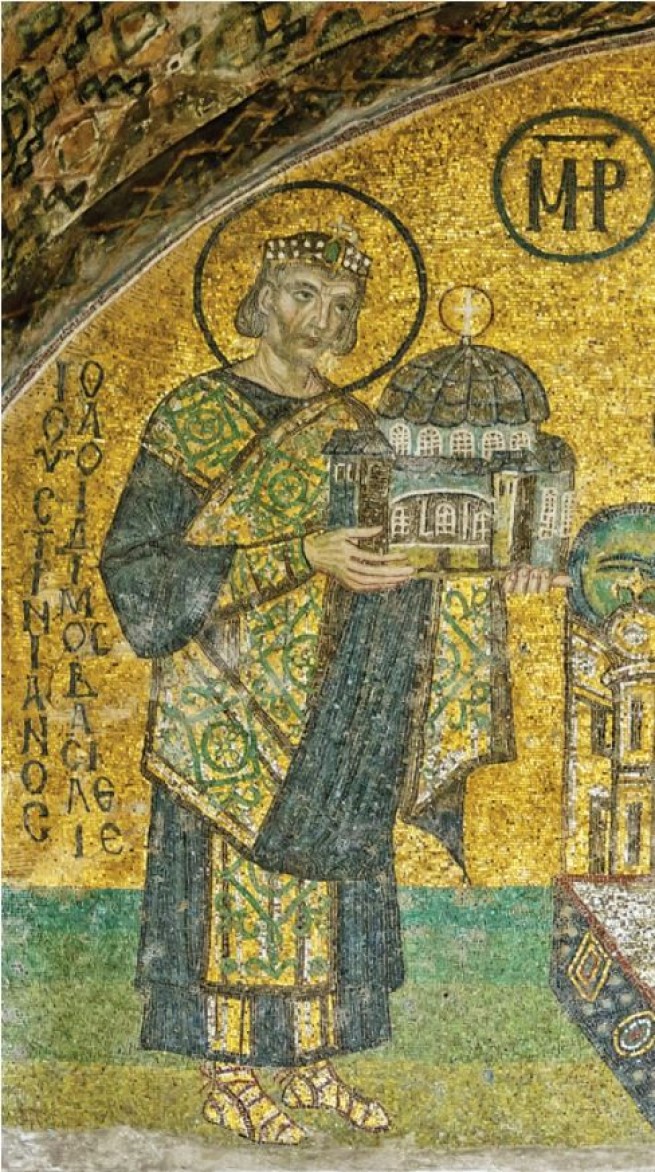
Prismatic Pictures/Bridgeman Images - Emperor Justinian presenting a model of Hagia Sophia to the Virgin and Child; detail of a mosaic in the vestibule of Hagia Sophia, Istanbul, tenth century.
__
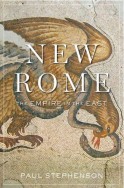
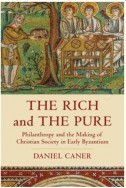
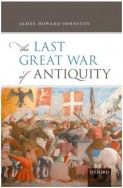
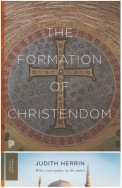
New Rome: The Empire in the East by Paul Stephenson Belknap Press/ Harvard University Press, 432 pp., $35.00
The Rich and the Pure: Philanthropy and the Making of Christian Society in Early Byzantium by Daniel Caner University of California Press, 410 pp., $34.95
The Last Great War of Antiquity by James Howard-Johnston Oxford University Press, 446 pp., $45.00
The Formation of Christendom by Judith Herrin, with a new preface by the author Princeton University Press, 530 pp., $24.95
___
These four books describe a remarkable society that once stood like a colossus between the Danube and the Euphrates, and was governed from its newly built capital, Constantinople (modern Istanbul). In the year 450 CE, at a time when the Roman Empire was about to vanish from Western Europe, there emerged a different Rome, a Roman Empire of the East, which survived for a millennium.
For Christians of the East (including the Orthodox Slavs) and also for Muslims, this Rome—the New Rome of Constantinople—was the only Rome that mattered. By contrast, East Rome has tended to linger awkwardly on the margins of standard narratives of the history of Western Europe. We are often told that the Roman Empire fell in the fifth century, but we are less often told that the entire eastern half of the empire survived, including the wealthy regions of Egypt, Syria, and Asia Minor. This Roman Empire of the East is usually spoken of as “Byzantium” (from the city overlooking the Bosporus that Constantinople replaced) and its inhabitants are called “Byzantines.” But “Byzantium” is a modern term when applied to the eastern empire. It is frequently used to keep at a distance a Rome too big and too surprising to fit the narrow confines of our habitual worldview.
All four of these books challenge this Eurocentric perspective. They are major contributions to our knowledge of the sheer richness and importance of the world of East Rome in its initial headlong centuries. The first three, in particular, concentrate on the period before the Arab invasions of the early seventh century. This was, of course, not the end of the story. The empire experienced an astonishing resurgence in the eighth and ninth centuries and continued, in one form or another, until 1453. But here we are concerned chiefly with its first three centuries.
Paul Stephenson’s New Rome: The Empire in the East covers the period from 395 to 700 CE. He brings the world of New Rome alive with exceptional learning and a magnificent openness to modern scientific methods that breathe life into conventional narratives of political and social history. For instance, pollen analysis of lake sediment in Asia Minor now enables us to follow, with remarkable precision, the expansion and contraction of cultivated land and decisive shifts from one crop to another—changes that directly affected the overall prosperity and tax base of the empire. Weather and landscape are captured in time. Even the sun wobbles: it is revealed to be “an erratic provider of energy,” owing to years of uncanny dimness caused by a veil of ash thrown into the atmosphere by distant volcanic eruptions (in 536 and again in 540).
But rather than flattening the human element, Stephenson’s approach takes us directly into the heart of East Roman society. We meet those most immediately affected by weather and soil—peasants and village headmen—before meeting emperors, bishops, generals, and the colorful array of courtiers whom we usually associate with the word “Byzantium.”
These villagers were sturdy folk who struggled to wrench from the unforgiving earth the wealth that supported glittering cities and great Christian shrines. Cycles of low solar energy, combined with the arrival of endemic plague in 541, strained to the utmost the resilience of the inhabitants of East Rome. But the human fabric held. Only as we approach the year 700 does the battle with nature and with human enemies appear to end in defeat. All over the Balkans and Asia Minor, the cities fell silent, ground down by disease, warfare, and the collapse of trading networks; the once-open villages came to huddle on hilltops, and the olive trees—which require a long time to take root and proximity to markets to make them profitable—vanished from the hills of western Syria. It would be more than a century before the empire, or what remained of it, regained its momentum.
Though his book is admirably up-to-date on the rural settlements of the eastern empire, Stephenson’s heart is with the urban centers. The more privileged inhabitants of East Rome witnessed the ancient cities’ last grand flare of glory and then the long centuries of their decline. In 500 CE they still formed a network “that churned with life.” They “looked, smelled and sounded alike. Their porticoed streets were covered with writing and echoed with noise, their public waterworks gushed and trickled, splashed and plinked.” In them could be found “the school and library, the thronged stoa and flowing aqueduct, the noisy baths and latrines”—which were often open to the air like a public bench, carved in monumental marble and adorned with witty poems—as well as “the busy interest of decurions,” the civic notables who handled the affairs of the city.
Part of Stephenson’s story is how the brash new megacity founded by Constantine in 324 “bludgeoned the other great cities into submission” and thereby drained them of lives of their own. Constantinople was an unquiet place, jolted by earthquakes and swept by fires. Behind its marble façade, the city (like Ottoman Istanbul a thousand years later) was a tinderbox of wooden houses. Hence the dread of riots accompanied by arson. When one such riot was suppressed with great brutality, a chronicler wrote, with evident relief, “Excellent order and no little fear prevailed at Constantinople and in every city of the Roman state.”
The skyline of modern Istanbul is still dominated by the Hagia Sophia, built by the emperor Justinian, who ruled from 527 to 565. This massive shrine, which radiates solidity, was built after a major uprising—the famous Nika (Conquer) riot in 532—left the center of Constantinople in ashes and 30,000 killed by imperial soldiers. The erection of Hagia Sophia was an awesome act of bravado—in Stephenson’s words, “the greatest single building ever to have been constructed” in the ancient world. With characteristic mastery of detail, he adds that the immense central dome was engineered to produce a “wet” sound—a reverberating boom “that washed across and immersed worshippers”—through an echo effect of eleven seconds’ duration (compared with two or three seconds in a modern concert hall).
Stephenson has a gift for picking out vivid bits of evidence from archaeological discoveries in Istanbul. At the Byzantine dockside buried under sand at Yeni Kapı, we meet Constantinople’s canines. They are not the lean, long-jawed hunting hounds that we see in the classical mosaics of the rich. They are snub-nosed little things, like the Maltese terriers shown on the graves of Roman women and much beloved by ladies of the court of the Tang emperors of China, where they were known as “dogs of Rome.”
So how did the inhabitants of this empire see themselves? Stephenson’s account of the social evolution of East Rome gives the impression of a society in search of solidarity. Earlier attempts had failed. The cities of East Rome were no longer held together through lavish giving by their wealthier members, as had been the case in the classical pagan system of civic philanthropy, known to scholars as “euergetism,” which had blossomed in the second and early third centuries. Euergetism had at least made poor town dwellers feel that they were part of a citizenry, endowed with privileges and amenities not enjoyed by noncitizens. Two centuries later, East Romans found themselves in a less caring world. In this more frankly plutocratic society, dominated by the imperial capital at Constantinople, service to the emperor brought greater rewards than loyalty to the city and its citizenry. Civic philanthropy withered, and the rich became ever more distant from the poor as well as from the farmers and local notables on whose labor and loyalty the splendid wealth of the empire depended. How could such a fissured society hold together?
Daniel Caner’s The Rich and the Pure: Philanthropy and the Making of Christian Society in Early Byzantium provides an answer to this question. Offering far more than a study of poor relief, it examines the meaning of religious gifts not only to the poor but also to the pure—the ascetics, clergy, and great monastic communities on whose prayers East Roman society was deemed to depend. Deeply learned and carefully considered, Caner’s book is a masterly exploration of “the first truly affluent, complex Christian society.”
What we find is a society whose imaginative resources were very different from our own. For the elites (many of whom were newly Christianized but still shared with Jews and pagans a common outlook on the world), what mattered most was that heaven and earth should stay connected. They needed to be sure that God Himself was not distant from them. This was no small concern. Modern people tend to worry about whether or not God exists. East Romans worried about the exact opposite: Did God know that they existed? A Being as majestic and remote as any emperor, God might turn away entirely from the human race. In 614, as a Persian army closed in on Jerusalem, a monk in the Judean Desert had a vision of Christ turning His Face away from those who prayed to Him as He bled on the Cross at Golgotha. God had made Himself distant. Now they were on their own.
A need to keep heaven and earth together had driven the contested church councils at Ephesus (in 431) and Chalcedon (in 451), and continued to drive opposing varieties of Christianity throughout this period and beyond. These councils were by no means devoted to abstruse speculations. They addressed a great fear: Christian theologians argued that if God and humanity had not been somehow joined in Christ, then human beings could claim no kinship with God, no sense of the warm fellowship of a shared nature—they would be forced to face unaided the impassive cliff face of divinity.
Hence the importance of correctly defining the balance of human and divine in Christ. For He was the bridge between heaven and earth: only He could approach God as a fellow God and yet be open, as a human, to human prayer and suffering. The upholders of the Council of Chalcedon (whose formulae came to be supported by the emperors and eventually emerged as the standard belief of the Catholic and Orthodox Churches) said that human and divine were held in equipoise in Christ, as if in a state of permanent agreement.
For those who opposed Chalcedon—the overwhelming majority of Christians in Egypt and much of Syria and Asia Minor—this was not guarantee enough. They believed that only the unique fusing of divine and human into a single and undivided nature could be sure to bring God fully down to earth and to lift humanity fully up to God. They were called “Miaphysites”—supporters of the single nature of Christ. For a Miaphysite, to settle for anything less would be a return to the old nightmare—allowing heaven and earth to drift apart, with pure, unmixed divinity forever separate from (indeed, maybe even disdainful of) mere humanity.
This concern explains the urgent need to touch heaven through people who mirrored on earth Christ’s intercession in heaven. The limestone hills in the hinterland of Antioch were dotted with the pillars of so-called stylite hermits—monks who stood on columns or at the windows of high towers. Each was believed to be engaged in constant prayer on behalf of humankind. They were thought to have brought God down to earth by praying for the many ills of society and, at times, intervening with the powerful and rebuking the rich.
The fifth-century originator of this form of asceticism, Symeon Stylites, was one such intercessor. Far better than any previous study (including my own of 1971, which presented the holy men of Syria mainly as patrons and arbitrators
), Caner has grasped the fascination of a figure such as Symeon: overlooking one of the richest and most relentlessly exploited landscapes in the Roman East, ascetic holy men were there to remind God of the great pain of the world.
But the monks and clergy were not merely intercessors with the divine. They also looked deep into their own society. The ascetic literature of East Rome is remarkable for its attempts to reach across the gulf between rich and poor on earth. Widespread anxiety about this gulf was addressed by sermons, saints’ lives, and spiritual advice tinged with unprecedented pathos. This literature of compassion was written by supporters of Chalcedon and Miaphysites alike, but it was often expressed most poignantly by the latter: for them, humanity, with all its sufferings, had entered into the very heart of God through Christ. And so every human being could be seen, like Christ, to be the bearer of a hidden god, whom the rich and powerful flouted at their peril. In the sixth century John of Ephesus—a staunch Miaphysite and dissident alternately wooed and bullied by pro-Chalcedonian bishops and emperors—remembered some of the monks of his native Amida (modern Diyarbakır, in eastern Turkey):
They did not in the case of anyone who came to them hold him to be a mere man of flesh, but though a mean and poor body, he appeared in their eyes as God who became flesh. And so they were eager to…honor him as if he were Christ.
Nor were these monks insensitive to the dark origins of the wealth that supported their monasteries. Caner shows how laymen, monks, and clergy struggled to create a notion of “pure” wealth—wealth bestowed by God to be accepted without guilt and passed on to holy persons, monasteries, and churches. But not every monk could ease his conscience in this way. John of Ephesus remembered one such monk who surprised his fellows by mumbling prayers at every bite of his meal “for the men whose sweat and labor we eat.”
Altogether, the striving for community in a hard-driven society accounts for some of the noblest passages in the ascetic literature of the time, as in the widely circulated collection The Sayings of the Desert Fathers:
The elders said that each should inhabit his neighbor’s condition whatever it might be; that he should, as it were, dress himself in his neighbor’s body and wear his whole humanity, compassionately suffering with him, sharing all his joys and tears, being so disposed that he wears the same body, face, and soul, so that if affliction ever befell his neighbor, he will be afflicted as if for himself.
This was the society that had to face what James Howard-Johnston describes in The Last Great War of Antiquity: the epic struggle between East Rome and the Sassanian Empire, based in Persia. For centuries these rivals had dominated the Middle East. From 602 to 630 they fought what promised to be a final struggle, and for a time it looked as if East Rome would vanish. In the end, the war proved to be decisive in a manner that no one could have anticipated, for it opened the way to the Arab conquests that entirely destroyed the Persian empire and seized half of the territory of East Rome.
Howard-Johnston brings an approach different from those of Stephenson and Caner. The Last Great War is not a military history in the narrow sense, but it is an unequaled study of war. In Howard-Johnston’s opinion, it has become almost too easy, in scholarly circles, to ascribe the collapse of empires to internal weaknesses alone: “The successful application of brute force, which historians are often reluctant to view as a determining factor, is relegated to a subsidiary role.” In other words, in his opinion, war matters.
Howard-Johnston views the Middle East with a general’s eye. Every fragment of evidence (not only in Greek but also in Syriac, Persian, Arabic, Armenian, and Georgian—such was the range of the war) is examined meticulously to gain insight into the intentions of the participants. The landscapes that determined their maneuvers are described vividly, drawing on his extensive travels throughout eastern Turkey, northern Iraq, and Iran.
The war began almost as a civil struggle: the Persian King of Kings, Khosrow II (who reigned from 590 to 628), aimed to bring about a change of government in Constantinople, in the hope of obtaining a malleable emperor with whom to renegotiate to his advantage the frontier between East Rome and Persia. At the time, he did not envision widespread conquests. There was no headlong rush of Persian armies spreading destruction far and wide. The dramatic arrows indicating troop movements in textbooks are misleading. The East Roman and Persian armies were small—some 15,000 to 20,000 men apiece. They were often separated from each other by hundreds of miles and moved like chessmen across an immense and unforgiving terrain.
Howard-Johnston reconstructs a duel of wits between two remarkable opponents. Khosrow II saw himself as the descendant of a legendary dynasty that reached back to the beginning of time. The darling of fortune, destined by the gods and the stars to bring order to the world, he was served by generals with auspicious names—Kardarigan, “Black Falcon,” and Shahrbaraz, “Panther of the Realm.” They were as gifted, as touchy, and as prone to take their own initiatives as Napoleon’s marshals. If only we knew more about them: the collapse of their empire and the Muslim conquest of Persia destroyed all trace of them. The Roman emperor Heraclius (who reigned from 610 to 641), by contrast, was his own general. He saw to it that he was remembered in panegyric accounts of the war as covered with sweat, his hair plastered with dust, eager to dye the black boots of a soldier purple with Persian blood.
In this game of bluff between widely separated enemies, information was at a premium. Heraclius emerged as a master manager of news. His campaigns were marked by sonorous appeals to Christian public opinion. The notion that death in battle for the faith was equivalent to a martyr’s death and guaranteed entry into Paradise soon emerged in Muslim circles, but it may have begun in the camp speeches and war communiqués of Heraclius. As a result, the last great war of antiquity became the first holy war of the Middle Ages.
At first the war favored Khosrow. Slowly but surely, his generals detached province after province from the eastern regions of the Roman Empire, just to prove that Heraclius, whom Khosrow mockingly called “the castrated one,” was unable to defend his realm. Jerusalem was sacked in 614 to drive home this lesson: the emperor of Rome and his god—Christ—could not protect their own holy places. It was a slap in the face to the entire system of intercessory piety that had led East Romans to pour devotion and money into holy persons and shrines, the holiest of which were in Jerusalem.
Yet having made their point, the Persian commanders settled down to rule their new conquests with a relatively light hand. Egyptian papyrus documents, often written in Pahlavi (Old Persian), tell a story of business as usual. One papyrus, in Coptic, shows how a family of village notables wrangled over the division of their property in a lawsuit that stretched, without hint of a break, from the time of the Persian occupation through the Roman reconquest and was eventually settled in 647, by which time Egypt was under Arab rule.
But as the war dragged on, the unthinkable—a world without Rome—became thinkable. Before 600, the Roman and Sassanian Empires had treated each other as equals, calling themselves the “two eyes” of the civilized world.
But by 615, Heraclius had been forced to forgo this parity. If only to play for time, he offered to become the vassal of Khosrow. By refusing this offer, Khosrow went a step further. He wanted to turn back the clock past the Battle of Marathon in 490 BCE, to rule an empire that stretched (as in the time of Xerxes) from India to the Danube. He hoped to swallow Heraclius’s empire whole.
After a further decade of war, Heraclius reached beyond the conventional Middle Eastern theater of war to seek alliances in the steppes. He made contact with the Turks, who had recently established an immense hegemony along the Silk Road from China to the Black Sea, joining the two ends of Eurasia. In 627 Heraclius greeted the yabghu khagan—the military commander acting for the ruler of the western Turks—under the walls of Tiflis (modern-day Tbilisi, Georgia). The pro-Persian garrison of the city, under siege from the joined forces of Heraclius and the khagan, looked down from the battlements on a ceremony barely conceivable a generation earlier—a Roman emperor embracing the khagan as a brother and placing a crown on his head. A new power had entered the scene. The defiant townspeople of Tiflis placed on the city walls a large pumpkin with the narrow eyes, smooth chin, and bristling mustache of a Central Asian nomad.
With the Turks behind him, Heraclius struck southeastward, along the ridges of the Zagros Mountains (which descended into Mesopotamia like the bleachers of a giant’s amphitheater) into the heart of the Sassanian Empire. Khosrow was overthrown and killed in a palace coup within months. It seemed as if a new world order had emerged: the two great settled empires of the Middle East—Rome and Persia—now had to share Western Asia with an ambitious nomadic power.
But which nomadic power? It appeared almost inevitable that it would emerge in the north, from the cold steppes and deserts of Central Asia. But this was not to be. At the far end of Asia, a giant stirred. In 629 the Tang Dynasty of China began a mighty push against the nomads on its western frontiers. Alarmed by this new belligerency, the western Turks turned eastward to protect their empire against Chinese aggression. The steppes adjacent to Rome and Iran were emptied of warriors.
As we know, other nomads emerged—not from the north, the world of the Silk Road, but from the hot sands of Arabia in the distant south. Howard-Johnston ends his book with a description of the rapid Arab conquests that immediately followed the great war between East Rome and Persia and the death of the Prophet Muhammad in 632. In his opinion, the creation of the Islamic empire was “the most extraordinary of all recorded historical phenomena.” It was certainly the least expected.
The world looked very different by the year 700. Instead of the ancient binary of Rome and Persia, three societies had emerged in the Mediterranean and the Middle East: an increasingly confident Latin Christianity in the West, and in the Balkans and Asia Minor a Roman Empire fighting for its life against the empire of Islam.
Few books have studied this remarkable development with such zest and insight as Judith Herrin’s The Formation of Christendom, published in 1987 and now reissued with a new preface by the author. Its insights and wide-ranging perspectives have remained challenging. It carries forward the story of East Rome, in a magnificent triptych embracing Latin Europe and Islam, up to the year 900. I trust that readers will share something of the excitement that The Formation of Christendom inspired when it first appeared, and that it still inspires.
Herrin’s book established a new sense of scale. Most general histories of Christianity had concentrated on the rise of Catholic Western Europe. Instead, Herrin conjures up a galaxy of Christian communities that stretched from Ireland to Iraq, studded with many centers, like clusters of pulsating stars. And in this galaxy Constantinople, not Rome, stood at the center, “while what would become England, Germany, and France constituted its periphery.”
To decenter Western Europe in this way was a bold act. Herrin helps us appreciate the sheer density of the interconnections between East and West that radiated from Constantinople. At a time when we might expect communications to have been seriously disrupted by warfare—first with Persia and then with the Islamic caliphates—Constantinople remained a sounding box of Christian symbols and ideas. These traveled rapidly from one end of the Christian galaxy to the other. Far to the north, in distant Britain and Ireland, what happened in Constantinople was closely observed, acted on, or contested.
Herrin also decolonializes Byzantium. She makes it clear that although Constantinople was a center, it was not a world all its own. Her training as a Western medievalist ensured that she would not be a mere “Byzantinologist.” She resists the temptation to see relations between Byzantium and the West as a one-way export of ideas and goods from Constantinople, as if they were the runoff of a superior culture to underdeveloped nations. A large part of the excitement of the book is its account of the pushback of the postimperial societies of Western Europe against the ideas and governmental methods of East Rome.
For this reason, Herrin warms to the Visigothic kingdom of Spain and values what she calls “the visigothic alternative.” Though the Catholic clergy of Spain were mostly of Roman descent and were alert participants in the culture of the Mediterranean, they kept their distance from East Rome. Intellectuals such as Isidore of Seville (circa 570–636) eschewed conventional views of the world order and treated the Roman Empire (both past and present) as no more than one kingdom among others. They insisted that all kingdoms were equal under Christ. No king was privileged: each would be judged like any other Christian. Herrin sums up Isidore’s new, demystified view of kingship: “Unlike past emperors, the new rulers share fully in the human condition and must convince their Christian subjects by counsel and good example, rather than by force.”
In many ways these were old-fashioned conclusions, but they pointed toward a deeper change. Some of the most sophisticated elites of Latin Christendom had already begun an “escape from Rome”—to use the title of Walter Scheidel’s provocative recent book.
The dream of an empire as old as time and as wide as the world had faded in their minds. It was the moment for something new.
A sense of newness runs through Herrin’s book. It is a story of new departures in troubled times. For this reason, she shuns the term “late antiquity” as a description of this period, arguing that “it implies an outlook determined by the past, backward-looking, constantly peering over its shoulder to the ancients.” I am not sure that all students of late antiquity would cast themselves in so melancholy a light. But Herrin is surely right to emphasize the forward-looking elements of this period. And she shows how this can be done. Her magnificent recent book Ravenna: Capital of Empire, Crucible of Europe recaptures the excitement of discovering the history of a city where East Rome and Latin Europe joined for many centuries in ways that defy our neat divisions between ancient and medieval; Romans, Greeks, and barbarians; East and West.
It is by way of books such as Herrin’s The Formation of Christendom and Ravenna, and the other books reviewed here, that the turbulent history of East Rome in its early centuries can contribute to the wider, richer history of Europe and the Middle East that we need in order to understand our own far-from-peaceful times.
This Issue
February 10, 2022
Peter Brown is the Philip and Beulah Rollins Professor of History Emeritus at Princeton. His books include Augustine of Hippo: A Biography and, most recently, Treasure in Heaven: The Holy Poor in Early Christianity. (February 2022)
SOURCE:
https://www.nybooks.com/articles/2022/02/10/the-other-rome-peter-brown/

